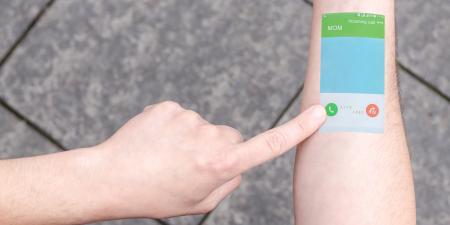Abstract
This case explores a fictitious hospital’s use of co-creation to make a decision about redesign of inpatient units as a first step in incorporating stakeholder input into creation of governing policies. We apply a “procedural fairness” framework to reveal that conditions required for an ethical decision about space redesign were not met by using clinician and patient focus groups to obtain stakeholder input. In this article, we identify epistemic injustices resulting from this process that could undermine confidence in leadership decisions. Suggestions are offered for incorporating stakeholder input going forward that address prior shortcomings. The result should be conditions that are perceived as procedurally fair and decisions that engender confidence in institutional leadership.
Case
The Moore County Hospital has been debating whether to establish its governing policies based on input from one focus group of former patients and another focus group of clinicians. Improving patients’ health outcomes and satisfaction scores are particularly important goals, so the hospital’s senior leadership would like to more closely integrate patients into creating organizational policies that ultimately shape their care experiences. Dr. Toftle, a physician now retired from practice whose main role is in the hospital’s administration, is a facilitator for the focus groups. She is leading a team tasked with reviewing input from the stakeholder focus groups, evaluating it, and facilitating consensus among the focus groups.
Specifically, the hospital’s senior leadership has budgeted to redesign the physical layout of the inpatient units, and a cross-disciplinary group of clinicians has devised a layout that they feel would promote greater efficiency and collaboration from a professional caregiver’s point of view. Nurse members of the focus groups express a need to be stationed farther away from patients’ rooms and closer to other members of clinical staff in a pod structure. They reference a chapter on design in the well-known book, Patient Safety and Quality: An Evidence-Based Handbook for Nurses, published by the Agency for Healthcare Research and Quality [1], which describes the utility of placing nurses in separate alcoves. This kind of design enables nurses to see their patients while also helping to reduce distractions that could interfere with their work. It also would enable easy access to the supply room and other members of the clinical team—physicians, social workers, and other nurses. Most nurse members of the focus group agree that this approach to design of the pod would best enable them to carry out their daily tasks and responsibilities efficiently.
Many members of the patient focus group, who are all former patients of the hospital, oppose the pod design many of the nurses favor, however. They would prefer that nurses be as close as possible to patients’ rooms. They reference the same chapter, which notes the benefits to patients of nurses’ close proximity [1]. Members of the focus group of former patients favor an approach to pod design in which a patient’s nurse can work at a computer unit stationed directly outside a patient’s room.
This is the first time the Moore County Hospital is soliciting input from former patients, and Dr. Toftle must review the range of participants’ feedback and suggest next steps for motivating consensus so that strategic planning processes can progress. The design favored by the nurses in the focus group is supported by numerous cross-disciplinary professionals within the hospital organization. The focus group of former patients is not only much smaller and less vocal but also less experienced in the day-to-day work of delivering health care to patients. Dr. Toftle wonders how to proceed.
Commentary
In this case, an administrator is seeking a consensus on the redesign of inpatient units from clinician and patient focus groups—whose members expressed conflicting preferences—as a first step in incorporating patient input into the creation of governing policies. The hospital has identified improving patient health outcomes and satisfaction scores as especially important goals for the space redesign. Dr. Toftle’s search for a consensus among the clinicians and patients in the focus groups suggests that leadership sees achieving consensus as more important than the underlying health and satisfaction goals of the space redesign, which would seem to contravene a straightforward utilitarian view of beneficence that would privilege patient outcomes.
In this article, we apply Persad’s “procedural fairness” framework to Dr. Toftle’s and the focus groups’ decision-making processes. In particular, we examine whether Dr. Toftle’s and the focus groups’ decisions met conditions for accountability, as well as noting epistemic injustices that resulted from Dr. Toftle’s arrangement of clinician and patient focus groups. We then suggest strategies to make her decision-making process more accountable and to ensure that all voices are heard. We believe these steps will create a decision-making process that seems reasonable, fair, and ethical to stakeholders.
Procedural Fairness in Decision Making
A top-down, opaque process of decision making has traditionally been the norm in clinician-patient relationships. Thus, patients typically were unlikely to have questioned the fairness of a trusted clinician deciding what data or information to give to or withhold from them. However, experimental evidence has shown that if people lack information about the trustworthiness of an authority figure, they judge that person’s decisions based on whether they believe the person used a fair process to reach the decision [2]. In the health care context, procedural fairness is sought through increasing the amount of information given to patients about the science and process behind a clinical policy or procedure, thereby fostering trust between patient and clinician [3]. In the case scenario, Dr. Toftle actively sought patient input in an effort to abrogate the typical health care information flow pattern, thereby strengthening the voices of those coming from the lowest rungs of authority. At first blush, such an arrangement might have been considered a positive and fair process, thus engendering trust in Dr. Toftle’s decision. However, merely flattening the traditional hierarchy does not automatically produce a fair or trustworthy process. Input from the clinician and the patient focus groups raises a mix of value questions (e.g., patient preference for having nurses close by) and factual ones (e.g., the effect of nurses’ distance from supplies on patient outcomes).
Persad [4] offers especially pertinent criteria for procedural fairness that can be applied to value-based and fact-based questions. In this case, clinician and patient satisfaction are value-based outcomes, whereas patient health outcomes and the distance of nurses to supplies are purely factual or epistemic questions. For value-based decisions, Persad relies on Daniels and Sabin’s argument that decisions meeting four conditions of “accountability for reasonableness” [5] are “ethically correct regardless of the substance of the decisions themselves” [6]. These conditions include requirements for decisions to be publicly accessible (publicity condition) and justified by relevant arguments (relevance condition), to provide a means for appeal and modification (revision and appeals condition), and for the decision process to incorporate accountability for the other three conditions (regulative/enforcement condition) [4]. For decisions involving factual outcomes, Persad argues that procedures are viewed as fairer when they avoid four types of epistemic injustice: the discounting of someone’s views “on the basis of unjustifiable biases” (testimonial injustice) [7], “ignoring testimony that cannot be conceptualized or expressed” within the existing framework (hermeneutical injustice) [7], “treating others as passive states of affairs” from which information is taken but not given (epistemic objectification) [7], and “using methods for collecting information that exclude relevant individuals or relevant information” (exclusion) [7].
In what follows, we apply Persad’s procedural fairness framework to Dr. Toftle’s and the focus groups’ value-based and fact-based decisions.
Processes Required to Meet Conditions of Accountability
First we will assess the extent to which Dr. Toftle’s and the focus groups’ decision-making process met conditions for reasonableness.
- Publicity condition. More information would be needed to determine whether Dr. Toftle’s decisions in convening and gaining input from the focus groups were publicly accessible, but a transparent process would involve disclosing how focus group members were selected and making available a summary of the input offered from each group.
- Relevance condition. Use of evidence by both focus groups seemingly was justified by relevant arguments that would be “accepted as relevant by fair-minded people who are disposed to finding mutually justifiable terms of cooperation” [8]. Nurses in the clinician group cited evidence that their preferred design, which put them closer to other staff and to supplies, enabled good visibility of patients and reduced distraction. Patients cited the same source to justify an opposing preference for nurses to be “as close as possible to patients’ rooms.”
- Revision and repeals process. To satisfy the revision and appeals process, Dr. Toftle would need to publicize a provisional design decision, seek and consider input, and then offer a final decision.
- Regulative/enforcement condition. To meet the regulative/enforcement condition, stakeholders would need to know who would receive Dr. Toftle’s recommendation and that she would be held accountable for meeting the other conditions required for the decision process to seem reasonable and fair.
Avoidance of Epistemic Injustice
Design of the input process. Dr. Toftle set the stage for numerous forms of epistemic injustice by using a static process, convening one focus group of clinicians and one of former patients. She likely separated patients and clinicians to avoid the testimonial injustice of clinicians discounting patient views due to their unjustifiable biases (e.g., against patients’ lower education levels). While focus groups benefit from homogeneity, a structure that would enable ongoing interaction between the clinician and patient focus groups would be needed to address epistemic injustices. The arrangement of noninteracting clinician and patient focus groups created an exclusion injustice whereby the clinician group may not have considered all relevant information, such as evidence for the effect of design on outcomes of interest to patients. Because the patient group lacked an individual with operational knowledge of the hospital, it sought an unrealistic level of nurse proximity that would be readily dismissed by clinicians. Patients’ lack of operational knowledge could have created a hermeneutical injustice because their framework did not allow for consideration of relevant testimony from clinicians about staffing limits. This injustice possibly could have been prevented by an iterative process that might have allowed the patients to learn of actual nurse staffing levels and revise their position accordingly. In failing to provide a mechanism for feedback and revision, Dr. Toftle was guilty of epistemic objectification whereby members of the groups were treated as passive beings from whom information was gleaned.
Weighing stakeholder input. Because the patient group is described as being “smaller and less vocal” and “less experienced” in the work of delivering health care, Dr. Toftle faces several challenges in giving the patient group’s viewpoint equal consideration. It would be important to know whether these “former patients of the hospital” would likely continue their relationship with the hospital or would not return due to extreme dissatisfaction with their care. Exclusion of the views of former patients who would never return would likely be an exclusion injustice, but it might also be a hermeneutical injustice if their reasons for never returning were important but only indirectly connected to the patient satisfaction issues associated with space usage. However, it is not clear that such input could be gathered fairly in a focus group that combined continuing patients with those sworn to never return. There would be an obvious risk of testimonial injustice whereby the continuing patients would be biased against the never-returning patients who might have been presumed to be using the focus group as an opportunity to air unrelated grievances. Focus groups are generally recommended to consist of homogeneous groups [9], so the hospital would have needed to conduct a separate focus group to include the views of those never planning to return for treatment.
The clinician group also had members who did not agree with the majority opinion. Failure to articulate the minority view could be a testimonial injustice if the minority views were excluded because of an unjustifiable bias, such as female nurses’ bias against male nurses. Or an exclusion injustice might have occurred if the group deliberately met when members with unpopular views were unavailable.
Next Steps for Design Decision Making
To reach a decision about the hospital redesign that would be perceived as procedurally fair while honoring the input of all of the stakeholders to date, Dr. Toftle should first abandon her desire for the groups to reach consensus on fact-based and value-based questions. Citing Elizabeth Anderson [10], Persad notes that factual decisions become more epistemically justified when they represent a scientific consensus [4]. Were the groups to have reached a consensus that maximized patient satisfaction at the expense of patient outcomes, it would be hard to argue that the outcome was an ethical decision by Persad’s criteria because satisfaction is a value-based question. Rather, Dr. Toftle must be guided by beneficence to reach a decision that optimizes outcomes over satisfaction or consensus.
Dr. Toftle should outline a longer term, transparent decision-making process that both satisfies the conditions needed for reasonableness and addresses the epistemic injustices that have already occurred. Leadership should invite nominations for a single task force comprising “fair-minded people who are disposed to finding mutually justifiable terms of cooperation” [8] and who represent the full range of relevant stakeholders. To counter the testimonial injustice of the earlier actions, Dr. Toftle should include some members from the focus groups who were observed to hold a range of views on the proposed design but were also known to be articulate, to be open to others’ opinions, and to work well in a team environment. In addition, she should actively solicit feedback from focus group participants whose views are not represented in the majority opinions. The task force could either incorporate these views or explain reasons for rejecting them through published FAQs. Dr. Toftle must also anticipate that in a single task force, members lower in the medical hierarchy would remain at risk of testimonial injustice. To counter this possible injustice, she might require that all task force members undergo interprofessional or community-based participatory training, such as that offered at the authors’ institution [11, 12] and has been advocated as a way of enhancing research capacity [11-13]. Such training might also reduce biases that lead to unfair exclusion of some voices.
To satisfy the publicity condition, Dr. Toftle should outline the decision-making process and provide updates through newsletters, town halls, and blogs. “Design thinking” might be an especially useful paradigm for this process [14] in that it counters epistemic objectification through a structured cycle of inspiration, ideation, and implementation that incorporates a revision and appeals condition.
To rectify the injustices that resulted from having had nonexperts interpret complex scientific literature and to better meet Persad’s condition of relevance, Dr. Toftle might engage a neutral expert to summarize the relevant empirical literature. To satisfy the revision and appeals process, she should ensure that, after the space is built, a mechanism exists to obtain ongoing feedback from stakeholders so as to optimize use of space and care processes. Finally, the entire process should be approved of by senior hospital leaders, satisfying the regulative/enforcement condition.
Conclusion
By replacing the search for consensus with an ongoing transparent process, addressing the conditions of accountability for reasonableness in decision making, and addressing past epistemic injustices, Dr. Toftle should be able to reach a decision that she and the other stakeholders are confident is in the best interest of all patients and staff, rather than one that satisfies two small groups of stakeholders. Instead of presiding over a situation likely to produce winners and losers, Dr. Toftle will have created one in which everyone can feel that their voices have been heard and have full confidence in the decisions of hospital leadership.
References
-
Reiling J, Hughes RG, Murphy MR. The impact of facility design on patient safety. In: Hughes RG, ed. Patient Safety and Quality: An Evidence-Based Handbook for Nurses. Rockville, MD: Agency for Healthcare Research and Quality; 2008:1-26. AHRQ Publication 08-0043. https://archive.ahrq.gov/professionals/clinicians-providers/resources/nursing/resources/nurseshdbk/nurseshdbk.pdf. Accessed October 2, 2017.
- van den Bos K, Wilke HAM, Lind EA. When do we need procedural fairness? The role of trust in authority. J Pers Soc Psychol. 1998;75(6):1449-1458.
-
Persad G. What is the relevance of procedural fairness to making determinations about medical evidence? AMA J Ethics. 2017;19(2):183-191.
-
Persad, 185.
-
Daniels N, Sabin JE. Setting Limits Fairly: Learning to Share Resources for Health. 2nd ed. New York, NY: Oxford University Press; 2008.
-
Persad, 186.
-
Persad, 187.
-
Friedman A. Beyond accountability for reasonableness. Bioethics. 2008;22(2):102.
- Kitzinger J. Qualitative research: introducing focus groups. BMJ. 1995;311(7000):299-302.
- Anderson E. Democracy, public policy, and lay assessments of scientific testimony. Episteme. 2011;8(2):144-164.
- Theurer J, Pike E, Sehgal AR, Fischer RL, Collins C. The Community Research Scholars Initiative: a mid-project assessment. Clin Transl Sci. 2015;8(4):341-346.
- Jewett-Tennant J, Collins C, Matloub J, et al. Partnership among peers: lessons learned from the development of a community organization-academic research training program. Prog Community Health Partnersh. 2016;10(3):461-470.
- Anderson EE, Solomon S, Heitman E, et al. Research ethics education for community-engaged research: a review and research agenda. J Empir Res Hum Res Ethics. 2012;7(2):3-19.
- Dorst K. The core of “design thinking” and its application. Des Stud. 2011;32(6):521-532.



